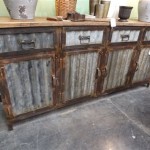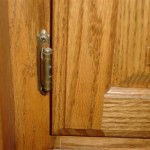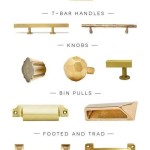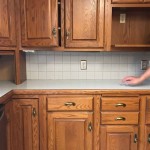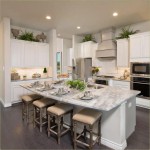Grey Kitchen Cabinets: Finding the Perfect Tile Backsplash
Grey kitchen cabinets have become a mainstay in modern interior design, prized for their versatility and ability to complement a wide range of styles, from sleek contemporary aesthetics to more traditional farmhouse sensibilities. The neutral nature of grey allows homeowners to express their personal taste through various design elements, and the backsplash is a prime opportunity to add color, texture, and visual interest. Selecting the right tile backsplash for grey cabinets requires careful consideration of several factors, including the specific shade of grey, the kitchen's overall design scheme, and the desired level of maintenance.
The decision-making process can be streamlined by understanding the principles of color theory and how different tile types interact with light and existing kitchen features. Ultimately, the goal is to create a cohesive and visually appealing space that reflects the homeowner's unique preferences and enhances the functionality of the kitchen.
Understanding Undertones in Grey Cabinets
Grey is not a monolithic color; it exists in a spectrum of shades, each possessing subtle undertones that can significantly influence the overall aesthetic. Identifying these undertones is crucial when selecting a backsplash. Greys can lean towards warm undertones like yellow or brown, resulting in a softer, more inviting feel. Conversely, cool greys have blue or green undertones, creating a more contemporary and sophisticated ambiance. Neutral greys, as the name suggests, lack distinct undertones and offer the most versatility in terms of pairing with other colors.
To determine the undertone of grey cabinets, it is helpful to compare them to pure white. Examine the cabinets in natural light and observe whether they appear slightly warmer or cooler than the white reference. Alternatively, holding up swatches of known warm and cool colors can help to reveal the hidden undertones. For example, if a grey cabinet appears more harmonious alongside a swatch of warm beige, it likely has warm undertones. Conversely, if it complements a cool blue-grey shade, it likely has cool undertones. Once the undertone is identified, backsplash selection becomes more targeted and effective.
Backsplashes with complementary undertones will create a harmonious and balanced look. For example, warm grey cabinets pair well with backsplashes featuring warm beiges, creams, or even earthy browns. Cool grey cabinets benefit from backsplashes in cool whites, blues, greens, or even shades of grey with similar cool undertones. Pairing contrasting undertones can create visual interest, but it requires careful execution to avoid a jarring or clashing effect. In such cases, it is often best to consult with a design professional to ensure a cohesive and aesthetically pleasing outcome.
Exploring Material and Texture for Backsplashes
The material and texture of the backsplash tiles contribute significantly to the overall design of the kitchen. Ceramic and porcelain tiles are popular choices due to their durability, water resistance, and wide range of styles and colors. Glass tiles offer a sleek and modern look, reflecting light and creating a sense of spaciousness. Natural stone tiles, such as marble or granite, add a touch of luxury and sophistication, while also introducing unique variations in color and veining. Each material offers distinct advantages and should be selected based on the desired aesthetic and practical considerations.
The texture of the backsplash is equally important. Smooth, glossy tiles create a clean and contemporary look, while textured tiles add depth and visual interest. Three-dimensional tiles, such as those with raised patterns or beveled edges, can become a focal point in the kitchen. Consider the overall style of the kitchen and select a texture that complements the existing design elements. A rustic farmhouse kitchen might benefit from textured stone tiles, while a modern minimalist kitchen might be better suited to smooth glass tiles.
Grout color also plays a crucial role in the overall appearance of the backsplash. A grout color that closely matches the tile color will create a seamless and uniform look, while a contrasting grout color will highlight the individual tiles and add visual interest. Dark grout can be a practical choice for high-traffic areas, as it is less likely to show stains. Ultimately, the choice of grout color is a matter of personal preference, but it is important to consider the overall design and desired effect.
Color Palette Considerations for a Cohesive Kitchen
Selecting a backsplash color that harmonizes with the existing color palette is paramount to creating a cohesive kitchen design. The color of the countertops, flooring, and other decorative elements should be taken into account when choosing a backsplash color. A neutral backsplash, such as white or cream, is a safe and versatile option that complements virtually any color scheme. However, a bolder choice can add personality and visual interest to the kitchen.
For kitchens with light grey cabinets and light countertops, a backsplash with subtle color variations or a delicate pattern can add depth and dimension without overwhelming the space. Consider using a mosaic tile with varying shades of grey, white, and cream, or a subway tile with a slightly different shade than the cabinets. For kitchens with dark grey cabinets and light countertops, a bolder backsplash color can create a striking contrast. Consider using a vibrant color like blue, green, or even a metallic tile to add a pop of visual interest.
Introducing accent colors through the backsplash can be a great way to personalize the kitchen and tie together different design elements. If the kitchen features a particular accent color in the accessories or décor, consider incorporating that color into the backsplash. This can be achieved through the use of decorative tiles, mosaic patterns, or even a simple border of colored tiles. The key is to use the accent color sparingly and strategically to create a balanced and visually appealing design.
Consider the impact of natural and artificial light on the backsplash color. Light can significantly alter the appearance of colors, making them appear lighter or darker, warmer or cooler. It is essential to view the backsplash samples in the kitchen under both natural and artificial light to ensure that the color complements the cabinets and the overall design of the space. Samples should be viewed at different times of day to account for changes in natural light, and under different lighting conditions. For example, cabinets and lighting can be vastly different during a bright sunny day versus at night with only artificial lighting. This will ensure that the chosen backsplash color is visually appealing under all conditions.
Moreover, the size of the kitchen should also be considered. In smaller kitchens, lighter colors and reflective surfaces can help to create a sense of spaciousness. A light-colored glass tile backsplash can be particularly effective in smaller kitchens, as it reflects light and creates the illusion of more space. In larger kitchens, darker colors and bolder patterns can be used to add visual interest and create a more intimate atmosphere. Ultimately, the choice of backsplash color should be guided by the overall design vision and the desired effect on the kitchen space.
The finish of the backsplash tile contributes to the overall aesthetic appeal. Matte finishes offer a subtle and sophisticated look. Glossy finishes are popular because they are easy to clean, stain-resistant and reflect light, and textured finishes add depth and visual interest. The overall style of the kitchen and personal preferences should be considered when making a decision.
When considering the overall design, remember that the backsplash is not an isolated element. It should complement the cabinets, countertops, and flooring to create a cohesive and visually appealing space. Therefore, taking the time to carefully select the right tile backsplash for grey cabinets will result in a kitchen that is both beautiful and functional.

20 Stylish Ways To Work With Gray Kitchen Cabinets Contemporary Cabinet Design Modern

20 Gorgeous Gray And White Kitchens Maison De Pax

25 Modern Grey Kitchen Cabinet Ideas Lily Ann Cabinets

Gray Cabinets White Subway Tile Backsplash Best Home Design Ideas Wb Kitchen

Backsplash Ideas That Match Grey Cabinets Choice Cabinet

Gray Kitchen With Marble Backsplash Tiles Transitional

Grey And White Kitchen The Perfect Color Choices Ocean Mosaics

Dark Gray Flat Front Kitchen Cabinets With Mosaic Tile Backsplash Modern

44 Gray Kitchen Cabinets Dark Or Heavy Light Modern

Gray And White Marble Kitchen Reveal Maison De Pax Cabinet Design Interior Home Kitchens
Related Posts

